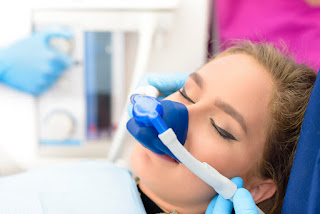How to Help Your Child Stop Thumb Sucking

Thumb sucking is for many children an easy and quick way to comfort themselves when they feel anxious, are bored or tired. It is a habit hard to break. It is so readily available and efficient against various stressful factors that it is difficult to find something else to replace it with and give your kid the same comfort.
What parents need to understand about thumb sucking is that it comes from a natural reflex of suckling and it goes away by itself in most cases. The thumb is like a pacifier for infants and toddlers up to 4 years old. They use it whenever they want to be comforted. It is not a big issue, after all, but when it passes a certain age, it starts to become a risk for proper oral development.
What Consequences Can Thumb Sucking Have?
You should take your child to a pediatric dentist for a check-up if thumb sucking still happens after the child is five years old. That is when the first permanent teeth start appearing and, from now on, any bad influence on their alignment or cleanliness can have long-term consequences for the child.
One of the things that can happen is an open bite, which means the front teeth have a gap in between them instead of overlapping. That leads to difficulties speaking, eating and a modified facial structure that affects the appearance of the little one. You can correct an open bite through operation, but it is quite intrusive and tough, so it is best to prevent it.
Other conditions caused by thumb sucking can range from poorly aligned teeth to gaps, underbite, cavities, stomatitis and other bacterial infections and various conditions that should be prevented by breaking the habit.
How to Help Your Child Stop Thumb Sucking?
There is no magical treatment or solution, as every child is different and the psychological causes of thumb sucking are unique. Observing the situations that trigger or encourage thumb sucking is crucial, as it will help you take the right actions when replacing one habit with another.
Examples of how you can replace thumb sucking are hugging and caressing each time they feel the need to be comforted, giving them some warm milk before bed to calm them down, avoid stressful situations and always be there for your child, offering support and love.
Explaining to them why thumb sucking is not recommended is also part of the process, even if you have to repeat the same thing countless times. That is also a chance to reinforce oral hygiene principles and go to a routine dental check-up, where you can ask the specialist what should be done. Build a trusting relationship between your kids and your St. Louis dentist, and you will solve a lot of problems, even before they appear.
The Dental Anesthesia Center: Sedation and Sleep Dentistry
950 Francis Pl #305
Clayton, MO
63105
(314) 862-7844



When it comes to the science of good hygiene, we all know how important taking care of our teeth and gums are-though for many of us, either genetics, absent-mindedness, costs, and/or insurance coverage can keep us from maintaining the overall health of our mouths-through proper brushing, flossing, and checkups with the periodontist raleigh. Unfortunately, this can lead many of us to need more advanced care in the form of a periodontist.
ReplyDelete